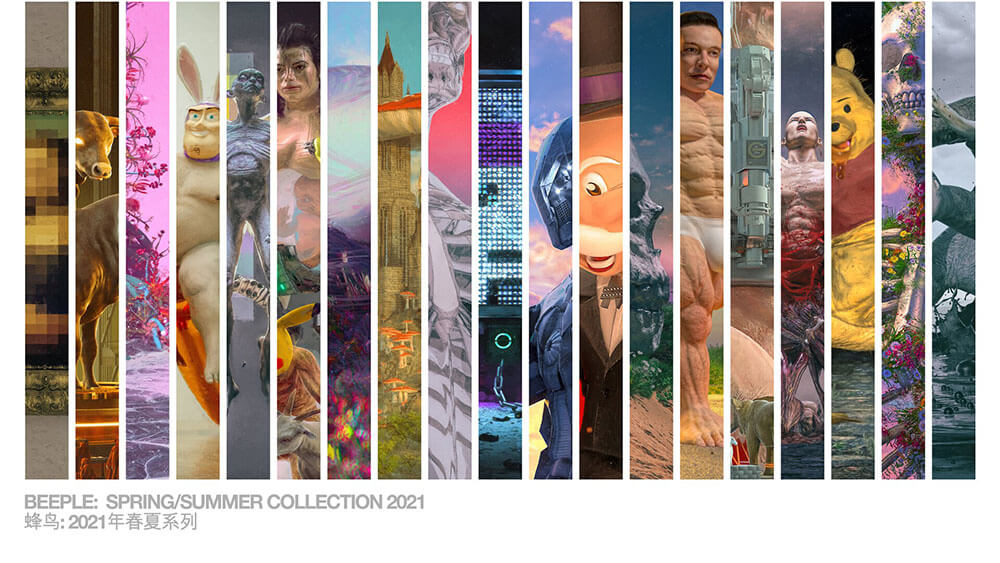By HAL WILLIAMS
IT’S SOMETHING BV asked as well (see Winter 2021/22 issue) — but global interest and ignorance have not been erased by our modest input on the issue, and we still have questions of our own.
A study by cryptocurrency site CoinGecko analysed thousands of NFT-related search terms to see which is the most Googled. Turns out, it’s simply to find out what NFTs are — a question posed an average of 948,000 times a month. The second-most common query — “How do you create an NFT?” — is Googled 287,000 times a month. As people get to the bottom of the mystery, we get the third-placed question: “Where to buy and sell NFTs?”
The monthly enquiries reflect an ongoing interest in non-fungible tokens, and other popular searches include requests to learn which NFTs are the most expensive — and the killer question: “Why are NFTs valuable?” CoinGecko’s head of research, Zhong Yang Chan, has provided some of the answers…
NFTs are non-fungible tokens on the blockchain, often used as digital representations of assets such as art, collectibles, music, video game items, and real-world assets such as property deeds, luxury items, diamonds, and more.
They can be generated through the deployment of smart contracts. NFT marketplaces such as OpenSea, x2y2 and Magic Eden enable a user-friendly creation process to upload files and mint NFTs.
The tokens can be traded on marketplaces across various blockchain networks — OpenSea, Magic Eden, LooksRare — and centralised exchanges such as Binance or FTX.
So back to that “most-valuable” enquiry, asked 102,000 times a month… While most attention is on profile picture collections like the Bored Ape Yacht Club (BAYC) or CryptoPunks, the most expensive individual NFT is Beeple’s The First 5000 Days, a collage created daily for over 13 years, which sold for $69m. (And used, at no cost to ourselves, as the cover of that winter print issue of BV — which left us a little confused about the value aspect of NFT ownership.)

The most expensive collection ever sold on the primary market was The Merge, by Pak, which raked in $92m.
Monetary value has a nebulous quality; as with physical art and other collectibles, an NFT becomes valuable if others perceive that it has value. The creator, the community surrounding the NFT, along with other factors, all have influence. In the case of gaming NFTs, it could represent game asset ownership within the game or metaverse, and the game’s development or metaverse roadmap can drive the NFT value up or down.
So, is there an environmental downside? Are NFTs — like Bitcoin mining — bad for the environment? Some 32,000 people around the world wonder that each month. Any environmental concerns surround the fact that NFTs are minted on the blockchain. But the most popular chains for NFTs — Ethereum (post-merge), Solana and Polygon — are based on the energy-efficient Proof-of-Stake consensus mechanism. (And no, we don’t quite understand that either; the important point is that no “mining” is involved.)
Minting — note the T — is the act of generating a record of an item, such as an image or audio file onto a blockchain as an NFT. The record is a path to retrieve the item from a database, as well as metadata: the creator, a timestamp of when it was created, and its traits.
So how, and why, can NFTs be worth so much money? Because of their exclusivity, according to Zhong; through the blockchain, an NFT holder can verify that they are the sole owner. In the case of NFT collections, those with popular or rare traits are typically more sought-after and would fetch higher prices. Some NFTs also confer special privileges or rights, such as access to exclusive clubs or communities.
Real estate NFTs could be the next step. A house in the US recently changed hands — based on the sale of a token. It wasn’t an image of a house that was sold: it was the house itself. According to the milkroad.com website, the new holder of the NFT holds the keys to the home in Columbia, South Carolina.
The sale took place via the Roofstock onChain marketplace that enables house purchases using NFTs. A limited liability company is opened, which takes ownership of the property. The property is then tokenised and an NFT minted to represent ownership — and it can be purchased with a mouse-click after a virtual tour on OpenSea.
The times are changing, and virtual is becoming the new real. Do NFTs make a better investment than crypto? Zhong says they are neither better nor worse: like traditional art, luxury goods, or stocks, NFTs are merely an asset class. Prices can be volatile, and potential buyers are advised to do their research before investing.
The real estate thing? Time will tell…
Have you had any experience buying, selling or creating an NFT? If so, BV would like to hear from you. Contact editor Hal Williams on [email protected]




























